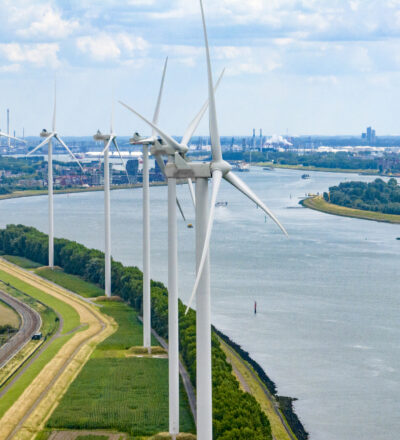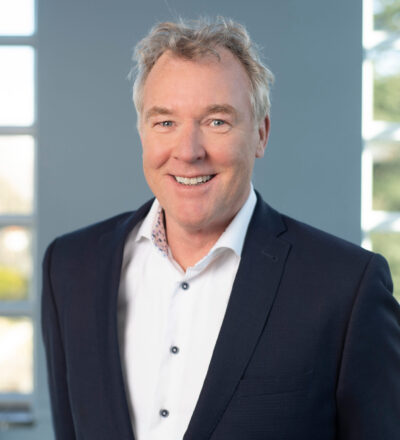The Dutch process industry plays a key role in the economy, providing the materials essential for our daily lives. However, it is undeniable that the industry is also a significant contributor to pollution. Overcoming this challenge requires a transition towards sustainable energy sources and circular materials, all while carefully balancing economic, social, and environmental considerations. Collaboration among government, industry, and civil society is essential to accelerate the shift towards a circular economy.
As the impacts of climate change are looming closer, the urgency to reduce CO2 emissions becomes increasingly evident. While we strive for sustainability, we also want to uphold our socio-economic welfare and independence amidst geopolitical challenges. Achieving this, highlights the significance of keeping our process industry close to home, all while embracing circularity and carbon neutrality. This, however, is making the transition of the process industry increasingly complex, state ISPT’s Tjeerd Jongsma and Geoffrey Schouten. In this article, Tjeerd Jongsma and Geoffrey Schouten examine in dialogue how they envision addressing environmental concerns while navigating the process industry’s journey towards energy and material transitions.
The role of the process industry in reaching our sustainability goals
In the Netherlands, a heated debate surrounds the future of the process industry. Many advocate for relocating the industry abroad, citing its significant energy consumption and substantial contribution to national emissions. However, it’s essential to acknowledge that the industry has the potential to play a crucial role in climate solutions. Our privileged seaside location, coupled with our entrepreneurial spirit and access to easily available green energy, sets the stage for a thriving circular industry. This potential of the Netherlands to pioneer a circular industry is often overlooked in discussions, emphasize Tjeerd Jongsma and Geoffrey Schouten. Seizing this opportunity will not only lead to a green and circular industry, but it will also foster greater employment opportunities, increase independence, and allow the Netherlands to become a hub of innovation.
“The industry’s high pollution level is an undeniable fact of life.” Tjeerd Jongsma states. “For years, the industry has operated and expanded on fossil fuels and feedstocks. Now, there’s a realization that this can no longer continue, and that we must hold the industry accountable. However, at the same time, the basic industry plays a central role in providing our primary needs and products that we cannot live without. While we aspire to live sustainably, we also desire clothing, housing, transportation, and the comforts that enhance our lives. We can still enjoy these conveniences provided we obtain them through circular and carbon-neutral practices.”
Prioritising Sustainability
Tjeerd Jongsma continues: “The solution can be found in transitioning towards sustainability and circularity. Under these circumstances, we can strike a balance between maintaining the industry’s economic position and progressing towards a green industry. A well-balanced energy mix of sustainable energies like solar, wind, biomass, and green hydrogen, can significantly lower the CO2 footprint of the Dutch process industry. Furthermore, a circular economy maximizes resource utilization, with materials recovered and regenerated at the end of their lifecycle. What’s waste for one factory could be a valuable resource for another.”
Geoffrey Schouten adds on: “By prioritizing sustainability, we can shift towards green production models within the Netherlands, rather than relying on importing ‘grey’ materials from elsewhere. This would also be economically more strategic, reassuring our autonomy. Take for example the steel industry; current steel production practices are polluting, and that needs to change. But we need steel for many (sustainable) applications, such as building wind mills and batteries. Importing raises concerns on its sustainability, alongside higher geopolitical dependence.” Continuing the discussion, Tjeerd Jongsma adds, “This also entails making strategic decisions regarding what parts of the industry are most desirable to keep close to home and what is feasible here. Utilizing our advantageous geographical position, especially with the North Sea for offshore wind energy, contributes to meeting our energy demands, by delivering sustainable energy. This can be combined with other green energy carriers like hydrogen, ammonia and bio-methanol, imported in the Port of Rotterdam. This combination has the potential to foster the greening of our essential industries and enable the circular processing of materials and waste streams.
This is part 1 in a series of 3 about the material transition and a circular process industry:
Part 1 – Material transition: the Dutch opportunity to fast-track a circular Europe
Part 2 – From theory to action: Implementing circularity in the Dutch process industry
Part 3 – Material change across industry, government, and society
Material change: a circular process industry
”It is important that the energy- and material transitions get top priority to achieve green production in the Netherlands,” emphasizes Geoffrey Schouten. “The energy transition requires a paradigm shift that cannot happen overnight. The challenge is that the entire industry has been tailored to fossil fuels for 100 years. While fossil fuels are cheap and have been instrumental in our economic growth, the environmental damage and eventually finite nature of fossil fuels underscore the urgent need for change. We must transition towards renewable energy sources for long-term sustainability. Prioritizing energy independence is crucial, especially in context of recent geopolitical issues highlighting the importance of reducing reliance on external energy sources.”
“In the raw materials transition, we already see progress towards a circular process industry. But we still have a long way to go,” says Tjeerd Jongsma. “Making raw materials circular is much more complicated since materials have complex and diverse chains. This requires an understanding of how all these links fit into each other to ensure a circular process. All actors in the value chain need to learn to speak each other’s language. You can develop a highly recyclable material, but how do you ensure it returns to the beginning of the chain from the consumer? Collaboration is essential for this.”
“Plus, there are economic considerations,” notes Geoffrey Schouten. “The use of circular materials is significantly more expensive. For instance, despite recent developments, circular plastics remain pricier than virgin plastics. Additionally, there’s abundant supply of cheap virgin plastics imported into Europe, making it challenging for the European based companies to compete on price.”
Time to execute a vision
“It is also important to note that the burden should not be placed on the industry alone within this debate. We all need to make significant changes in our lives and lifestyles. A transition touches on the psyche of us as individuals. There are fears and worries, both in society and in businesses. Each phase of the transition is different and requires its own approach. The most important thing is that there is a clear, overarching vision. From there, leadership, human skills, and resources are needed to streamline the transition,” says Tjeerd Jongsma.
“It also requires effective policy and legislation,” adds Geoffrey Schouten. “It is the responsibility of the governments to highlight the urgency of climate solutions and provide clear explanations. The current debate is highly polarized, whereas collaboration is what we truly need. It is crucial that we act fast regarding this, both in national politics and in Europe. An integrated approach is key: legislation should not be developed ‘in silo’s’ but developed in a connected way with the overarching goals in mind. Additionally, legislation must be ambitious yet feasible.”
”We have identified the ‘why’ and ‘how,’ and now it is time to act. Government support and industry expertise are crucial, but collaboration with all stakeholders in society is equally vital. We need to strike a balance between societal and economic interests. To achieve this, environmental organizations and governmental bodies must actively engage with industry. Ultimately, we all have the same goal in mind, making it imperative to establish and execute this as a clear vision,” emphasizes Tjeerd Jongsma.
“The climate crisis parallels the tale of the frog in a pot of boiling water. It arises seemingly out of nowhere, and before you realize it, it’s too late. Today, the effects of climate change are becoming increasingly evident. However, we firmly believe that we can reverse the trend. With intellect, determination, innovation, and collaboration – among everyone and everything,” concludes Geoffrey Schouten.
ISPT develops sustainability programs togeter with the industry
The raw materials transition is becoming increasingly complex. So complex, that the need for companies to join forces is becoming stronger. It is no longer about individual process innovations, but about system innovation and closing the chain together.
Joining ISPT means access to knowledge and people. We share costs and risks, and you’ll take the know-how back home with you, accelerating the growth of your own organization. Interested in our work? Subscribe to our newsletter, follow our LinkedIn or contact our wonderful team.


